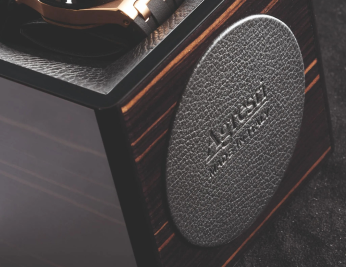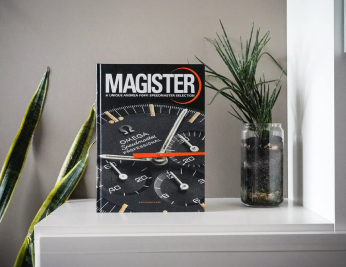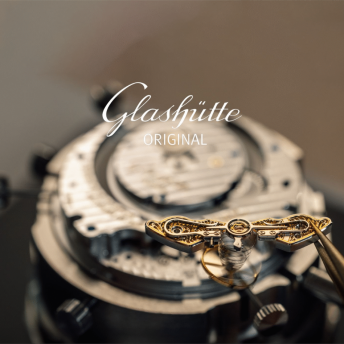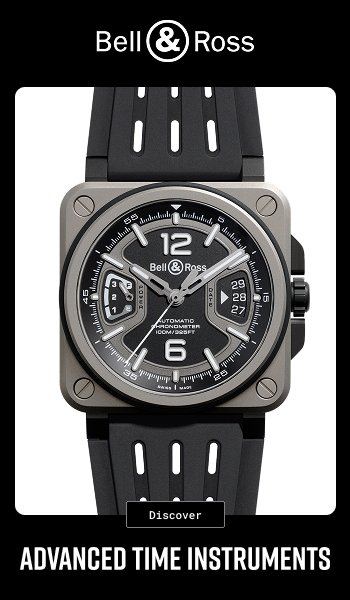Who determines, among hundreds of watches, which one is the best? Is it technical innovation that really matters, or design, quality craftsmanship, the history of a brand? Why are two luxury giants like LVMH and Richemont each fighting to get their own prize? And most importantly: how can the Grand Prix d’Horlogerie de Genève claim to be the award that celebrates the best watches of the year if public favorites like Rolex, Patek Philippe, and Omega are absent?
These are some of the questions we asked ourselves that prompted us to go into more detail about the mechanisms that govern the most important Awards in watchmaking.
The “Oscars” of watches: the Grand Prix d’Horlogerie de Genève
The most famous and coveted of the awards is undoubtedly the Grand Prix d’Horlogerie de Genève (GPHG), often known as the “Oscar of watchmaking.” Founded in Geneva in 2001 with the stated aim of “honoring and promoting the art of watchmaking,” it has over the years become the main stage, an annual rendezvous that not only awards the best watches in some 20 different categories, but also helps build a kind of contemporary canon of watchmaking.
The two cornerstones of the organizational machine are the Academy and the Jury, which brings together thirty members from the Academy, half drawn and half appointed by the President, so as to ensure a balance of diverse expertise, representativeness, and autonomy of choice. From the hundreds of nominations from around the world, the Jury selects a shortlist of finalists that should represent excellence in contemporary production, and then decrees a single winner per category – among which the most prestigious award and most desired trophy is the Aiguille d’Or.

IWC Schaffhausen’s Portugieser Eternal Calendar, winner of the Anguille d’Or 2024.
The Cartier Prize for Watchmaking Talents of Tomorrow

From left, the winners with their works: Marta Maziers, Yann Mayer, Coline Riondet, Hugo Mandrillon, Samuel Pauly, Simon Girard, Valentine Gredzynski. ©Victor Picon
Less well known than the Grand Prix, but crucial to understanding how the Maisons cultivate the future of the industry, the Cartier Prize for Watchmaking Talents of Tomorrow was established in 1995 at the initiative of theInstitut Horlogerie Cartier and is aimed at students and apprentices from watchmaking schools in Switzerland, France, Germany and (as of 2024) Belgium, with the goal of providing them with an educational opportunity.
There are two well-defined categories: Apprentices, dedicated to apprentice watchmakers, and Technicians, aimed at students of microtechnology and related disciplines. Only one theme proposed by Cartier each year that candidates must interpret starting with a basic movement (in 2024, that of a Cartier table clock within the theme Magic of the Senses).
Evaluating not only technical precision but also creativity and the ability to imagine new sensory functions, a five-member jury selects twelve finalists, who are given 80 hours, spread over two months, to develop the project with the support of expert mentors. In addition to a priceless Cartier watch, the winners gain access to internships and training periods in the Maison’s factories, an opportunity that can truly mark the beginning of a career.

From left: First prize for the Apprentices category, Marta Maziers and La Reine du Temps; First prize for the Technicians category Hugo Mandrillon and Œil du temps.
Louis Vuitton Watch Prize for Independent Creatives

Left, Raúl Pagès, winner of the first edition of the LV Watch Prize, with Jean Arnault, Director of Watches at Louis Vuitton.
More recent and with a decidedly global scope, the Louis Vuitton Watch Prize for Independent Creatives was established in 2023 by Jean Arnault, Director of Watches at Louis Vuitton, to intercept artisans and micro-brands that often operate far from the spotlight and offer them not only visibility but also concrete tools to grow.
The biennial call for entries is aimed at independent watchmakers, designers, and small ateliers, who are evaluated on five key criteria(Design & Aesthetics, Creativity & Audacity, Technical Innovation, Details & Finishings, and Complexity) by a jury of five experts made up of retailers, collectors, trade journalists, artists, craftsmen, designers, and other enthusiasts.
One of the most interesting aspects of this award is its rare openness: it welcomes participants from all over the world, from established master watchmakers such as Bernhard Zwinz and David Candaux to emerging young Chinese brands such as Behrens and Fam Al Hut, and is able to keep the competition intense and stimulating because the nominees are not locked into arbitrary categories, but compete within a single pool of excellence.
In addition to this, the prize itself has a concrete and tangible meaning: the winner is awarded, in addition to the silver trophy and prize money (€150,000), a one-year mentorship at La Fabrique du Temps with Michel Navas and Enrico Barbasini, designed as a structured and personalized accompaniment that concretely enables the winners’ watchmaking visions to become reality.

Grand Prix d’Horlogerie: why Rolex, Omega and Patek Philippe do not participate in the competition
Seen from this perspective, the picture appears well-structured and almost idyllic, as if each prize occupied a definite role and space in a complementary logic: the Grand Prix legitimizes present excellence as a recognition of institutional prestige; the Cartier Prize builds the talent of the future by training emerging promise; the Louis Vuitton Watch Prize supports independent creativity in a patronage effort that functions as an incubator of daring and innovation.
But isn’t it strange then that leaders like Rolex, Omega, or Patek Philippe prefer to stay out of the game? Rolex, for example, has never taken part in a ceremony at the Grand Prixdespite the fact that its “sister” brand Tudor won the Petite Aiguille in 2017 and in two other categories in the past three years. Patek Philippe participated in the early years (winning two Aiguille d’Or with Ref. 5102 Ciel Lune in 2002 and Ref. 5101 P 10 Jours Tourbillon in 2003), but has been absent for more than a decade.
Likewise Omega, which after winning the Revival Watch Prize in 2014 with the Speedmaster Dark Side Of The Moon has not participated in a few years, and Audemars Piguet, whose absence is perhaps most surprising considering the many awards it has collected over the years.
The value of watchmaking prizes

Grand prix de l’horlogerie de Genève, November 10, 2022. @nicolaslieber
So indeed it is true-each has its own space, its own area of interest. Just as it doesn’t make sense to ask whether the Baftas, Oscars, and Emmys overlap each other by overcrowding a space, I don’t think analyzing the scope of these awards is the right question. Nor do I think it makes sense to ask whether the awards have intrinsic value, because they undoubtedly do.
The Grand Prix is a showcase capable of altering market balances and demands. Reading it with a critical eye, accepting its role of prestige and legitimacy, helps to understand that it functions as a mirror of tastes and as a catalyst for notoriety.
Thus conceived, the Cartier Prize is a strategic training and selection tool, with which a major maison like Cartier reaffirms its responsibility in the transmission of savoir-faire, but above all its willingness to make a direct investment in the hands and ideas that will build the watchmaking of tomorrow.
The Louis Vuitton Watch Prize is itself a strategy aimed at consolidating a certain cultural reputation, an idea of the brand as a patron promoter of talent and a creative reference point. L’LVMH Prize for Young Fashion Designers, in this sense only reinforces the brand’s role in the luxury industry and lends it an aura of authority.

Louis Vuitton Watch Prize 2025-2026 semi-finalist.
Awards represent recognition, visibility and legitimacy: they establish a recognized canon that influences the market, collectors and the public. They are, however, paradoxically, arbitrary constructions: behind the juries are cultural, economic and political logics, and personal opinions that prevent their neutrality. They are not The Absolute Truth, but a form of official interpretation of an industry, whose real value lies in their ability to keep attention on the world of hands alive. Like them or not, they remain moments when a community looks in the mirror and tells its story.
It is a paradox, this one, that may not be entirely reconcilable, but one that becomes tame when one accepts that the real value of awards lies in their ability to create a shared narrative, to keep the conversation alive about works that would otherwise remain marginal, and to direct-with all their distortions-markets and audiences.
Ultimately, that is where the discourse finds balance: when we stop asking the prize to be fair in an absolute sense and decide to use it in our favor as a cultural lever and narrative tool, that is, as a pretext for reflecting on the present.
Visit our Youtube channel to experience the best of the world of watchmaking firsthand.
For all real-time updates follow us on Instagram.













